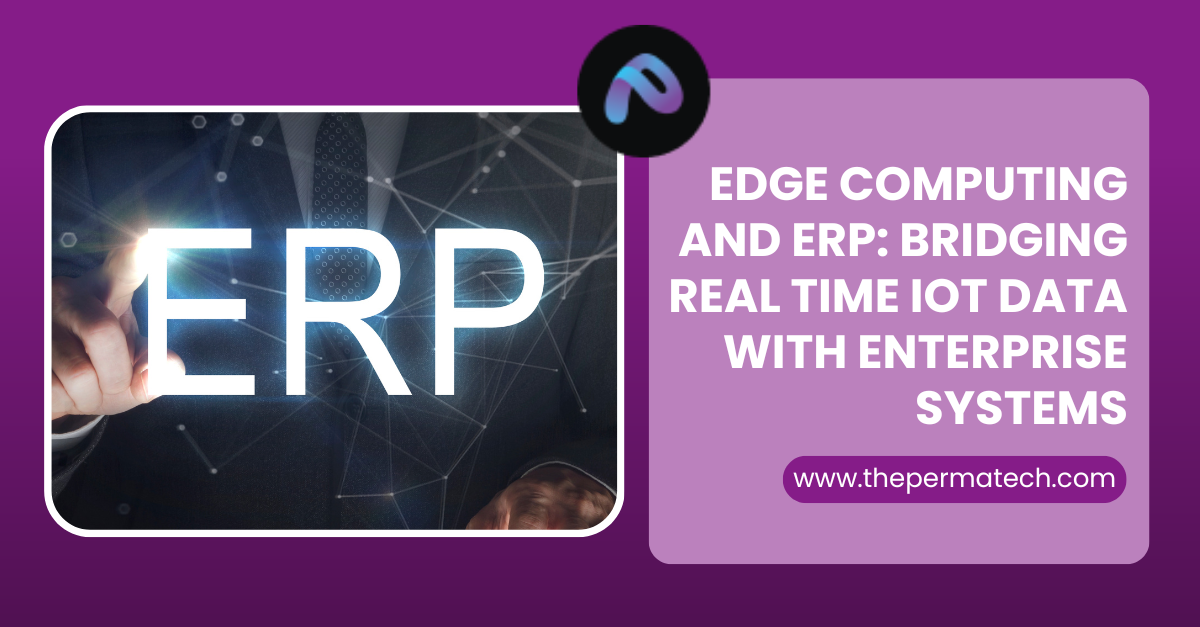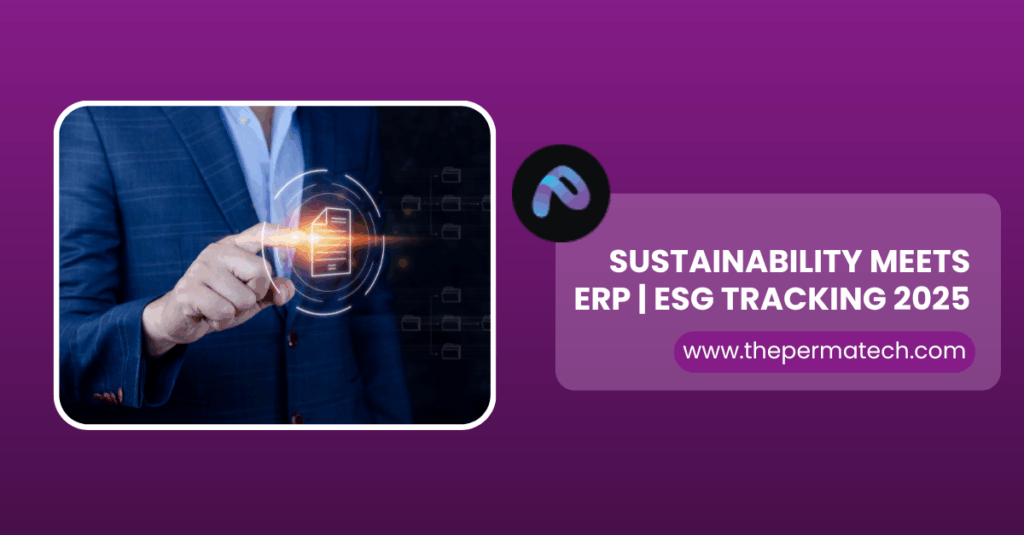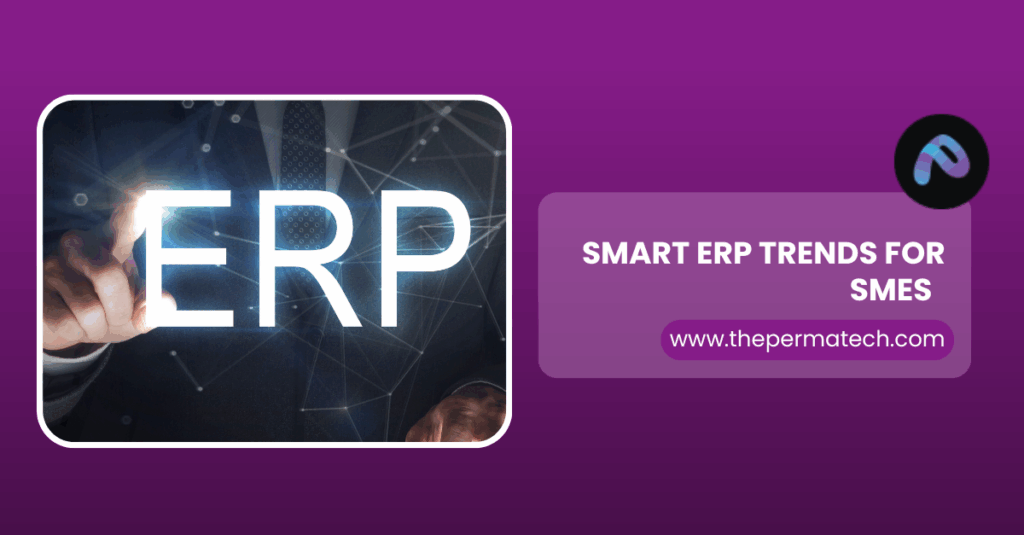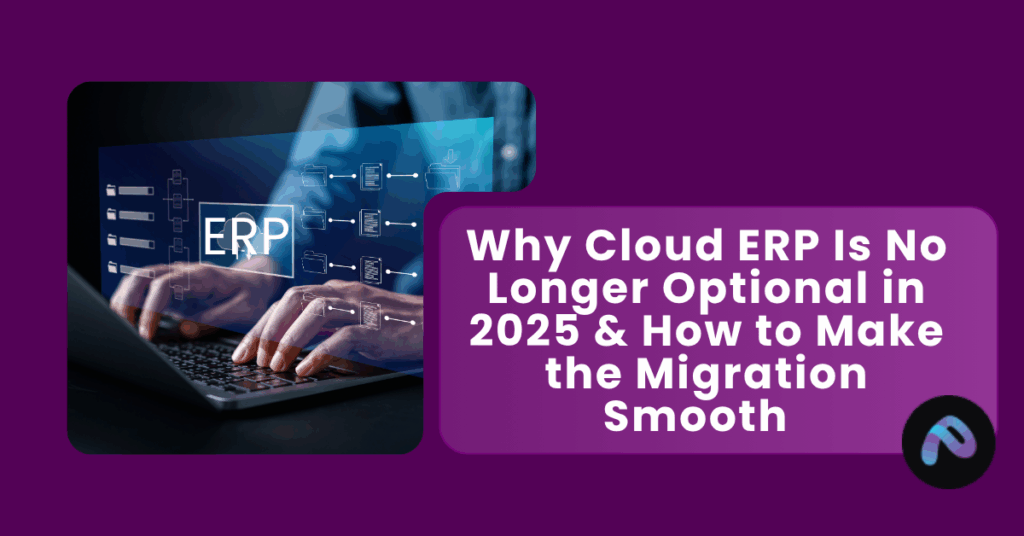The explosion of Internet of Things (IoT) devices has shifted the way enterprises collect and act on data. From connected factory machines to intelligent logistics sensors, real time insights are becoming the foundation of modern operations. However, the real challenge lies in integrating this massive, fast moving IoT data into enterprise resource planning (ERP) systems that power supply chain, finance, HR and production workflows.
This is where edge computing comes in. By processing data closer to its source and syncing relevant insights into ERP systems, organizations can reduce latency, improve decision making, and unlock competitive advantage.
Why Edge Computing Matters in ERP Integrations
Traditionally, IoT devices send raw data to cloud platforms for processing, which then feed ERP dashboards. But with billions of devices generating zettabytes of data, cloud first models face:
- Latency issues: Cloud round trips can delay critical insights.
- Bandwidth costs: Constant transmission of raw sensor data strains networks.
- Security concerns: Sensitive data traveling across wide networks is vulnerable.
Edge computing addresses these by processing and filtering data locally, forwarding only essential information to ERP systems.
Market Insights: Edge Computing + ERP
According to IDC (2024), by 2026 over 50% of enterprise generated data will be created and processed outside traditional data centers or cloud. ERP vendors like SAP, Oracle NetSuite and Microsoft Dynamics are already building connectors for edge + IoT data.
- Global Edge Computing Market Size (2024): $17.8 billion
- Forecasted CAGR (2024–2030): ~37% (MarketsandMarkets)
- ERP + IoT Integration Spend: Expected to cross $12 billion annually by 2027
This growth highlights enterprises’ push toward real time, data driven ERP workflows.
Benefits of Bridging Edge computing and ERP
| Dimension | Without Edge Computing | With Edge + ERP Integration |
| Data Processing | Centralized in cloud, delays up to seconds/minutes | Local preprocessing, sub-millisecond insights |
| Bandwidth Usage | High – all raw IoT data sent to cloud | Reduced – only filtered/critical data sent |
| Decision making | Reactive – after cloud analysis | Proactive – real-time ERP updates |
| System Reliability | Dependent on internet/cloud uptime | Local resilience, works even with poor connectivity |
| Security | Higher exposure during transit | Local data control, fewer transmission risks |
Use Cases Across Industries
1. Manufacturing (Smart Factories)
Machines equipped with IoT sensors can detect vibration anomalies at the edge. ERP systems receive instant alerts for predictive maintenance scheduling, avoiding downtime.
2. Retail & Supply Chain
Edge nodes in warehouses track inventory levels in real time, syncing with ERP modules to trigger automated procurement when thresholds are crossed.
3. Healthcare
Connected medical devices generate sensitive patient data. Edge computing ensures faster diagnostics locally while ERP handles billing, scheduling, and compliance reporting.
4. Energy & Utilities
Smart grids process consumption data at the edge, forwarding usage summaries to ERP systems for billing and demand forecasting.
Key Technology Trends (2025 Update)
- ERP Vendors Embedding IoT/Edge Connectors
- SAP launched its “SAP Digital Manufacturing Cloud for Edge” extension in early 2025.
- Oracle’s Fusion ERP now includes edge API hooks for logistics sensors.
- AI at the Edge
Gartner predicts that 70% of edge deployments will include AI by 2027, accelerating ERP decision making.
- 5G + Private LTE Networks
With global 5G adoption surpassing 1.9 billion connections in 2025 (GSMA), enterprises are building private 5G networks to link IoT, edge, and ERP seamlessly.
- Cybersecurity by Design
Regulatory pressures (GDPR, U.S. Cyber Trust Mark 2025) are pushing ERP vendors to integrate zero trust edge security frameworks.
Challenges to Overcome
- Integration Complexity: ERP systems are historically rigid. Plugging in heterogeneous IoT/edge sources requires middleware.
- Cost of Edge Infrastructure: Edge servers and gateways add CapEx.
- Data Governance: Deciding which data should be processed locally vs. pushed to ERP/cloud.
- Skills Gap: Enterprises lack professionals skilled in both ERP workflows and edge computing architectures.
Analytical Perspective
- A 2025 McKinsey study found that companies integrating IoT + edge with ERP achieved 20 – 30% faster supply chain decision cycles.
- Case Study : Automotive Sector: BMW leveraged edge-enabled ERP for production lines, cutting downtime by 15% and saving $200M annually.
- Case Study : Food & Beverage: Coca Cola implemented real time IoT to ERP beverage tracking, boosting demand forecasting accuracy by 27%.
The Road Ahead
Looking forward, edge computing will not replace cloud ERP but complement it. Think of a hybrid ERP architecture:
- Edge ERP: Handles instant, local, mission critical decisions.
- Cloud ERP: Manages long-term planning, compliance, analytics and global visibility.
By 2030, ERP systems without edge compatibility will likely be considered legacy, much like on premise only systems today.
Conclusion
Enterprises no longer ask if they should integrate IoT with ERP,they ask how fast. Edge computing provides the missing piece, enabling ERP systems to act as real time command centers rather than delayed reporting tools.In an age where milliseconds matter whether for saving machinery, securing patient health, or optimizing logistics the bridge between edge computing and ERP is becoming a business imperative.





